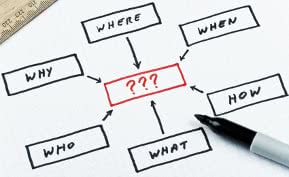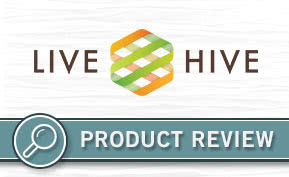Sales Tools
Channel Incentives: 3 Ways to Make Your Sales Team Happy (Part 2)

[This is the second post from a three-part series on channel incentives. Read the first part here.]
Depending on who you ask, channel incentives are either a company’s bread and butter, or the fly in the ointment. On the one hand, incentives are one of the most important levers that channel-based companies use to shape demand, build channel loyalty, and drive mindshare and revenue. On the other hand, numerous voices feed the incentive development process, often making initiatives too complex for both the vendor and its partners to effectively administer and measure.
We’ve covered finance’s perspective on incentives, so now let’s look at a closely related group with its own complex opinions on incentives: sales teams. Like finance, sales has a stake in the success of channel incentives, but for different reasons. To muddle the picture further, channel sales and channel marketing often have a starkly different perspective on incentives than their peers in sales operations. However, harmony is possible and we’ll look at some ways to make incentives work for both channel sales and sales operations.
Why Channel Sales and Channel Marketing Love Incentives
Channel marketing loves creating new ways to drive products, reinforce key messages, and gain market share. Incentives help channel sales executives accomplish these goals in three ways:
- More!: Sales managers love incentives because new incentives add another reason to engage and excite partners, gain mindshare, and sell more product.
- Get creative: Over time, standard incentive, promotion, and rebate programs grow stale. Channel sales management pushes its channel marketing peers (and the rest of the company) to come up with fresh, exciting, and high-impact incentives.
- Strengthen the relationship: According to a Deloitte survey, 25 percent of respondents derived more than 75 percent of their revenue from channel partners. An additional 25 percent received between 25 and 49 percent of their revenue through channel partners. High tech sales leaders understand how incentives, rebates, and other promotions improve partner engagement, loyalty, and focus.
Why Sales Operations Balks at Channel Incentives
While channel sales and channel marketing teams are looking for more, bigger, and better incentives, their peers in sales operations tend to approach incentives more cautiously, focusing on the following three principles:
- Measurement: “If you can’t measure it, you can’t improve it.” This is the mantra of almost any operational role. Oftentimes, truly creative incentive programs are never implemented because those in operations (or finance or IT) simply can’t effectively measure them. Naturally, this left-brained approach (focusing on analytics and logic) often conflicts with the creative, intuitive right-brained approach of the incentive originators.
- Compliance: A key element of the operations role is to ensure that all incentive claims, payments, and transactions are handled in a manner that complies with internal, documented processes as well as regulatory requirements. While out-of-the-box incentives might excite sales managers and channel partners, they represent a heightened element of risk to operational teams.
- Accuracy: Ensuring the right amounts are paid to the right people in a timely manner is part of the charter of most sales operations teams. Again, the more complex and unique the channel incentive program, the harder it is to ensure accurate payment to partners. In fact, industry research suggests that high tech companies overpay 10-15 percent of incentive claims, leading to millions of dollars of lost profit.
How to Make Your Sales Team Get Along
So, how can companies with vast armies of channel partners satisfy the needs of both their create-and-implement and measure-and-validate teams as well as enabling their partners to drive greater and more profitable revenue? Here are three tips to align all parties’ needs and to keep your sales team focused on driving revenue:
- Think process, not function. Most corporations take a silo-based approach to channel incentives: one function focuses on creating the offers, another function focuses on validating and processing, and a third might focus on analyzing and reporting. By delegating the key components to different departments, a cohesive end product is unattainable. When sales departments work together when developing incentive programs, the result is often a high-impact, differentiated, yet measureable plan.
- Keep creativity, but build in metrics: Innovative incentive plans can drive more revenue faster, making them worthwhile investments. But in order to keep sales operations happy with new programs, implement metrics to measure the success of new incentives. That way, channel sales can reap the benefits of a high-impact program, while sales operations gains measurable control over the plan.
- Streamline claims processing: Late or inaccurate payments to channel partners infuriate sales leaders and can weaken relationships over time. The combination of high volumes of claims and increasing incentive complexity with outdated, manual, and spreadsheet-driven processes is a recipe for disaster. The best solution is to implement an automated and integrated solution that encompasses everything from agreement creation, and incentive and claim validation, to analytics and reporting. This eliminates the error-prone, legacy processes and ensures incentive eligibility, payment accuracy, and compliance. Automated claims processes make channel partners happier, which translates to more revenue, fewer pricing-related discrepancies, and happier sales and sales operations teams.
- Speed up development: Another way to make everyone happy is to reduce the time required to produce higher impact incentives. Automated contracting and incentive management systems track and store the details of every incentive-related transaction. This data can be used as the starting point for designing and modeling future incentives. The best way to create compelling and revenue-generating incentives is by leveraging data on past performance. Another win for both sales and sales operations.
While channel sales and sales operations don’t always see eye to eye, they do have the same objective: to grow the bottom line. And with that goal in mind, it is possible to make everyone happy. By adopting these tactics, sales teams can merge their perspectives to develop a high-impact incentives plan that can drive revenue and accelerate growth.
Want more information about channel incentives? Keep a look out for the next post on how incentives are viewed from the supply chain perspective.






